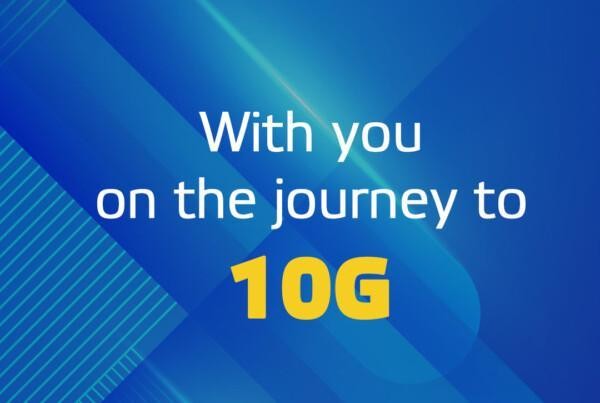Broadband Densification Demands Intelligent Operations.
Guest blog by Liliane Offredo-Zreik and Mark H. Mortensen, ACG Research.
Increased demand for access bandwidth requires cable access densification, bringing more active equipment closer to the customer. Deploying operationally intelligent equipment can reduce expensive truck rolls for dense urban multifamily dwelling units and long-run rural environments, which are increasingly addressed by government subsidies.
Bandwidth consumption, which had been growing significantly, accelerated meaningfully during the pandemic. By some conservative estimates, utilization increased 20% downstream and 35% upstream, driven by work from home, telehealth, online education, e-commerce, entertainment, etc. It is widely expected that bandwidth utilization will continue to grow, as some of the models established during the pandemic will persist over the long term. Indeed, broadband has become an essential utility worldwide. An added driver for bandwidth utilization is the need for 5G backhaul network densification. Nowhere is this densification more essential than in the dense urban areas with a high concentration of MDUs, and fixed broadband capacity in the last mile is ideally suited to deliver this capacity as long as power and latency requirements are met.
Cable operators have invested substantially over the past year to deliver the bandwidth capacity the market needs. Operators focused on increasing upstream capacity, which is typically constrained in cable networks. In the US, only 42 MHz is typically allocated to upstream bandwidth versus 65 MHz and in some rare cases even 204 MHz allocation in Europe. Increasingly, the US operators are considering mid-splits (typically allocates up to 85 MHz to upstream) and even high split (up to 204 MHz for upstream), while at the same time looking to expand their total spectrum to 1.2 GHz or beyond to 1.8 GHz as they eye meeting the longer-term capacity promises of DOCSIS 4.0.

Subsidized broadband densification demands intelligent operations in multifamily residential buildings.
This is true for multidwelling units (MDUs), home to about 30% of the US population. As the government invests substantially to close the digital divide, MDUs, home to a large part of the lower income population, will receive a large share of government broadband subsidies. Although this creates a significant opportunity for cable operators, they need solutions that are cost- effective and fast to deploy and operate.
One cost-effective solution to provide broadband in brownfield MDUs is over the HFC infrastructure: fiber from a service provider’s network feeds coaxial distribution connections that ultimately support coaxial connections to individual customers . However, delivering broadband in MDUs is complex; for example, operators need access to facilities both for installation and for service calls, and MDUs are often in dense urban environments where parking is a challenge. Therefore, they need intelligent network elements that can be managed and modified remotely via software, obviating the need for expensive and operationally complex truck rolls.
An operationally intelligent network solution can consist of an intelligent optical node and intelligent amplifiers that are managed by a software facility that enables remote monitoring, measurements, and control:
- Automatic adjustments and alignments,
- Automated configuration of the network elements,
- Remote monitoring of the active equipment,
- Remote measurements of the ingress entering through passive equipment.
In urban areas where MDUs are prevalent, the higher number of customers and more active equipment means more trouble reports and more failure conditions, requiring more truck rolls. At the same time, each truck roll is more expensive in urban areas, which can cost well upward of $150/roll. Increasing the operational intelligence in the last mile delivers significant cost reductions and improves customers’ satisfaction. Not only does it drive a substantial reduction in the number of truck rolls, but also decreases the time to resolve troubles and allocates technicians to other tasks with better revenue generating potential. Importantly, pre-empting outages and addressing faults before they escalate into outages will improve customer satisfaction, a win-win for both operators and customers.
Urban areas are not the only environments where intelligent last mile equipment can deliver value. Another major component in closing the digital divide is to provide broadband to currently under-served rural areas. These are difficult areas to serve due to long distances and long service runs, meaning, again, more truck rolls that are each more expensive. Solutions that can be managed remotely will be instrumental in enabling cost-effective deployments in those areas.
About the authors
Liliane Offredo-Zreik researches and writes about the trends that are shaping the industry and advises clients on their strategies in light of constantly changing industry dynamics and market landscape. Prior to her industry analyst and advisor role, Liliane was a VP of Strategy and Development for Time Warner Cable (now Charter), where she was instrumental in the launch of voice service and for defining a roadmap and an infrastructure for converged services.

Mark H Mortensen (@DrMarkHM) is an acknowledged industry expert in communications software for the TMT sector, with over 40 years of experience in OSS and BSS specifications, software architecture, product marketing, and sales enablement. His work has spanned the gamut of technical work at Bell Labs, strategic product evolution at Telcordia, CMO positions at several software vendors, and as a research director at Analysys Mason. Most recently, Mark has focused on the technology and processes of digital transformation for Communications Service Providers and the growing automation and orchestration of network and business processes.






